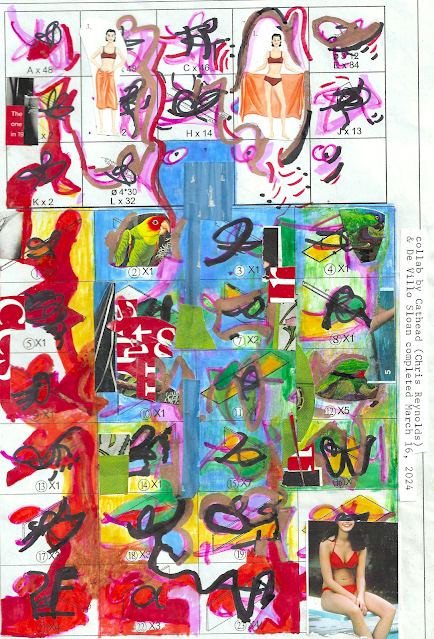Light Pours In: Poems & Images
by Amy Rodriguez
Tallahassee: Anhinga Press Visual Poetry Series
34 pages 5.5 X 8.5 inches 2024
Review
by De Villo Sloan
This has been a year of successful launches for the Anhinga Press Visual Poetry Series. For their inaugural chapbook, series editor Kristine Snodgrass selected Light Pours In by emerging artist and visual poet, Amy Rodriquez. Anhinga Co-Director Carol Lynne Knight collaborated with Rodriguez to produce a book of exceptional quality.
I reviewed Rodriquez’ Asemic Poetica: Volume 1 (2021) with much enthusiasm. Light Pours In, for me, is a continuation of the vision she first presents in Asemic Poetica.
The new book shows maturity and increasing creative skill. In particular, the conventional poems in the book are beautifully crafted lyrics; some of the finest I have seen among current visual poets.
In a previous review, I praised the Anhinga vispo editors for providing so much helpful supporting material as a part of the visual poetry series books.
The new visual poetries – rooted in conceptual art and post-structuralist theory among other areas - can seem daunting to those who are attracted but still unsure how to engage with new art and writing. (Actually engaging with avant and postavant art requires no prior knowledge, and contrary to popular opinion: It can be fun as well as a journey into human expression!)
In Light Pours In by Amy Rodriguez, Anhinga Co-Director Carol Lynne Knight shares her experience working with Amy:
“Delicate, energetic, bold – the asemic lines in Amy Rodriquez’ images are assured yet at times wild. While her images use the ‘grammar’ of asemics, the aesthetics are pure and mature, a painterly and spontaneous flow of ink and pen.” I have no better words of my own. My heartfelt congratulations go to Carol and Amy on the completion of this wonderful collaboration.
Locating trends in the Anhinga Press Visual Poetry Series might be premature. All the same, I will close with an observation involving Amy's Light Pours In and Andrew Brenza's Colorways: both published in the series.
These books use a structure of alternating text-based lyric poems and asemic visual poetry. Placed in the context of the New Concrete Poetry where similar trends can be found, I conclude that the use of Ekphrasis can be a vital tool in the composition of contemporary visual poetry.
Light Pours In by Amy Rodriguez is a significant work by a gifted emerging artist and poet.
(De Villo Sloan is a visual poet and reviewer of post-avant art and literature. He is director of the Winifred and De Villo Sloan, Jr. Charitable Fund.)

.png)



























